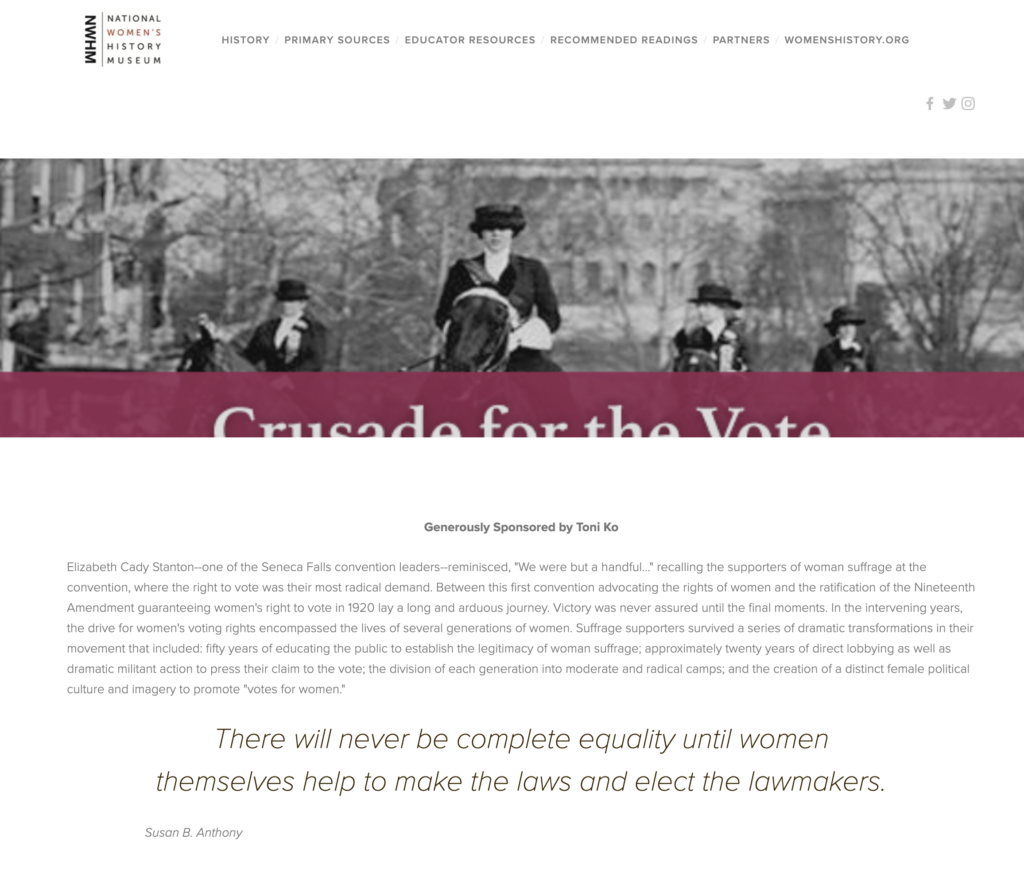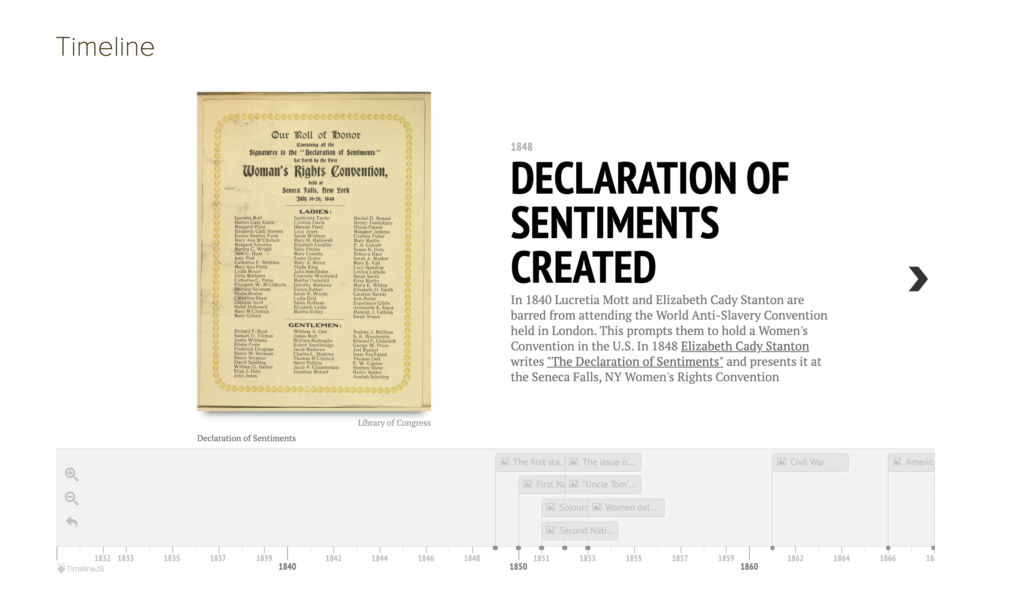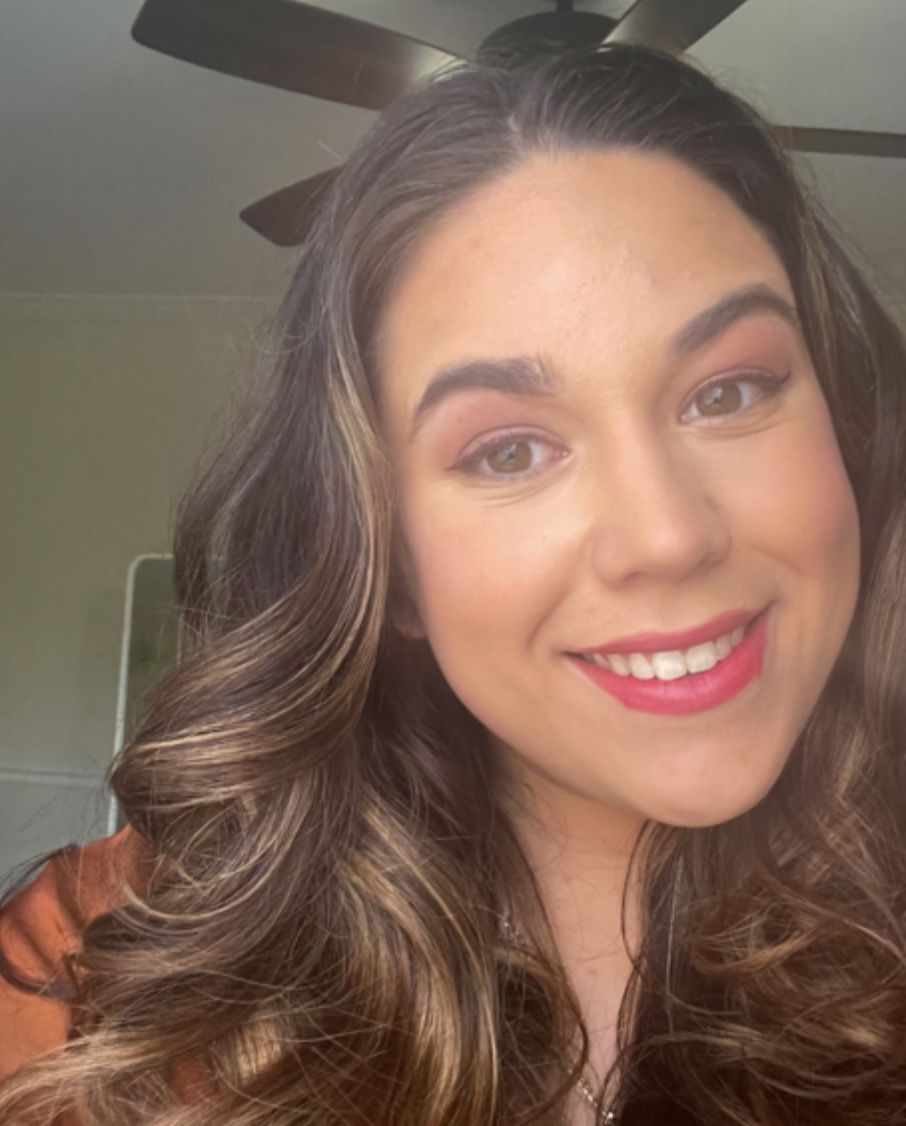
The website that I chose for my website analysis assignment is the National Women’s History Museum (NWHM), specifically a sub they titled “Crusade for the Vote.” They have a wide variety of resources including primary sources, educator resources, recommended readings, and a link to their physical museum website, womenshistory.org. The website provides the context of the 1920s and the women’s fight to vote. In the main paragraph at the top of their webpage, they mention Elizabeth Cady Stanton and her role in the Seneca Falls Convention and the “arduous journey” towards expanding women’s rights. An empowering quote from Susan B. Anthony is also featured, reading, “There will never be complete equality until women themselves help to make the laws and elect the lawmakers.”
The creator of the website is the National Women’s History Museum which is located in Alexandria, Virginia. On their ‘About Us’ page, they state their mission to be “to tell the stories of women who transformed our nation.” They plan to achieve that “through growing state-of-the-art online presence and a future physical museum to educate, inspire, empower, shape the future, and provide a complete view of American history.” The current director, President & CEO, is Holly Hotchner, who was also the first museum director at one of America’s oldest museums, the New-York Historical Society. On her biographical page, she is quoted saying “Today, women are not only finding their voices, but their voices are also being heard. There could be no better time than now to build this museum.”

The site is very well done. It is aesthetically pleasing and very responsive. The color palette of the website is very cohesive as the colors are neutral but also have some bright shades of purple that help the sections of the website to really pop. The website has interactive elements such as a Timeline with high-quality images of primary documents and photos of crucial figures during the women’s rights movement from 1820 through 1920, covering a whole century. The quality and modernity of the website create a pleasant experience when searching through their site. There are also three buttons on this page (as shown above) that lead to three additional pages: (1) the history of woman suffrage, (2) additional educational resources, and (3) scanned versions of primary sources.

I do trust the site because it is produced by a well-known museum that has access to primary sources. From the presentation of the website, it seems that the authors worked very hard on it and have done extensive research to ensure that the information is accurate but also presented in a way that is easy to navigate and visually appealing.
This site can be used for 1920s research in various ways. One can use it for access to both primary and secondary resources. The research and information that is provided span over a century’s worth of information. In regards to the 1920s specifically, there is enough information that is provided to ensure that an individual using the website for research can gain enough information that provides enough context of the era, as well as the aftermath of various developments that took place during this time. The information that is provided is not only covering one specific group of women but also women of color and working women, to allow for a greater understanding of how women were impacted during this era.

Angelina Farallo is a Law and Society Major at Ramapo College of New Jersey. Ever since she was in elementary school, history has always been her favorite subject. During her studies at Ramapo College, she has studied how the modernization of technology has affected various industries such as the law, and in this case history which is what drew her to take this Digital Humanities course.
